SUMMARY
This is AI generated summarization, which may have errors. For context, always refer to the full article.
![[OPINION] Dear IATF, quarantine rules for travelers should be backed by science](https://www.rappler.com/tachyon/2021/11/hotel-quarantined-travelers-november-4-2021-sq.jpg)
We all have been overly stressed with the unknowns of COVID-19, no matter where we are in the world. I myself never planed to go home to the Philippines this 2021, since we are still in the middle of the pandemic. However, my reasons for going home, unfortunately, are to arrange my father’s ashes in his final resting place after his own struggle with COVID-19, and to spend time with my mom suffering from terminal cancer, which was diagnosed weeks after my father’s death. Double jeopardy, as they say, yet the harrowing experience of even just planning to go home had added salt to the wound.
Test, trace, isolate, vaccinate
As an infectious disease scientist and a vaccinologist leading multiple COVID-19 studies, I assure you that the virus doesn’t discriminate. Specific regulations are put in place to prevent the transmission of the virus among the population. The wide use of viral detection methods such as RT-PCR, a nuclear-derived method for detecting the presence of SARS-CoV-2, is imperative to trace and identify whether the virus has infected an individual.
But how can a regular minimum wage earner of P537/day afford a fast and reliable RT-PCR that costs P3,500 and up? An antigen test, though less sensitive, might be helpful, but that too cost about P700 and would still need to be followed up by a PCR test for confirmation. These should come cheap or free to the population; however, the RT-PCR and antigen testing business seems to be the most lucrative money-making venture during this time in the Philippines.
Quarantine and isolation will prevent community spread of the virus for those who have come in close contact with positive infected individuals. Furthermore, an efficient vaccination strategy will protect the population at the individual and community levels. These are lifesaving measures, especially for immunocompromised individuals who might not have the optimal health to fight off the virus in their bodies. These will also lower morbidity and mortality and bring life back to a pre-pandemic state.
But many of the imposed regulations seem redundant, coming at a massive expense to all the Filipinos.
Multiple countries have championed properly containing the spread of COVID-19 using these strategies. Take a look at Israel. They have a free universal healthcare system to provide the best care for its people, and was the fastest in the world to vaccinate the whole population. While there might be outbreaks from breakthrough infections, the country’s current COVID-19-related death rate remains close to zero. The New England Journal of Medicine in October 2021 reported that out of 1,497 fully vaccinated Israeli healthcare workers, 39 breakthroughs were documented. Contact tracing found no evidence that any of the 39 healthcare workers with breakthrough infections passed it on to anyone else, perhaps due to a lower viral load in fully vaccinated individuals.
In fact, many countries are allowing fully-vaccinated international travelers to enter their countries without having to show a negative coronavirus test or imposing quarantine. While I certainly advise that the Philippines should take precaution in opening the borders, it must also be done thoughtfully, cutting unnecessary expensive corners, and should mainly be based on science.
On IATF resolutions
The Philippines Inter-Agency Task Force for the Management of Emerging Infectious Diseases mentioned on the first line of their resolutions that the State should protect and promote the people’s right to health and instill health consciousness. They classified travelers outside the country as green, yellow, and red based on the COVID-19 incidence rates and case counts, with testing data as secondary criteria. Under IATF Resolution 144-A, they have outlined the following rules:
For green countries, fully vaccinated foreign nationals and Filipinos can show a negative RT-PCR taken 72 hours before departure from the country of origin with no required facility-based quarantine. For unvaccinated, partially vaccinated, or those with vaccination status that cannot be independently validated, there will still be facility-based quarantine until the release of a negative RT-PCR test taken on the fifth day.
For those on the yellow list, fully vaccinated individuals need to undergo facility-based quarantine until the release of their RT-PCR taken on the fifth day, and home quarantine until their 10th, with strict monitoring while in the facility.
While the IATF quarantine procedures from international travelers should aim to prevent virus transmission from outside the country, some guidelines don’t scientifically make sense.
For those coming from the yellow and green list: “Unvaccinated or partially vaccinated minor children traveling with their fully vaccinated parent/s or guardian/s shall be required to observe the quarantine protocols corresponding to their vaccination status. A parent/guardian shall accompany the child in the quarantine facility for the full term of the latter’s facility-based quarantine period.”
The unvaccinated state of a young child should not determine the quarantine status of the whole family, as this negates the entire vaccination status of the family members. When the whole vaccinated family is already quarantined for 5 full days, isolated from the world, and all found to be COVID-19 negative by RT-PCR, you should not expect that the unvaccinated child will suddenly turn COVID-19 positive unless there is an outside contact. This should be common sense, apparently, and must be reiterated word for word.
Let us look further at the science and see how other countries approach this scenario.
On Oct 25, 2021, the US Center for Disease Control and Prevention (CDC) amended the order implementing the Presidential Proclamation on advancing the safe resumption of global travel during the COVID-9 pandemic. The Proclamation stated that requiring vaccination for children, in general, would be inappropriate without proper study (especially for kids younger than 5 years old). In addition, it will pose difficulty for families traveling together when some members are vaccinated and others cannot be.
While the US has approved the vaccines for those 12 to 15 years of age and recently for those 5 to 12 years old, children across the globe do not have the same access to vaccination. An age-based exception proceeds in the Proclamation, and as a part of the attestation to the airline entering the United States, the CDC decided that children under the age of 18 will not be required to attest (or have the parents/guardian on their behalf) to having arranged a self-quarantine at all cost. CDC has determined that self-quarantine should not be needed, especially when being accompanied by a vaccinated parent. However, they must be tested for COVID-19 3 to 5 days after arrival and self-isolate if they should be positive or develop COVID-19 symptoms.
In the UK, children under 11 years old don’t even need to take the test 3 days before arrival, and in addition, children under 5 years old don’t need to take the tests on Days 2 and 8 after arrival at all compared to the adults.
In the Netherlands, the measures against COVID-19 specifically mention that children under 4 do not have to self-quarantine as they rarely infect other people.
In Canada, unvaccinated children younger than 12 years who enter with a fully vaccinated companion are not required to quarantine if the child follows all the requirements for fully vaccinated travelers and complies with the conditions of the Minister of Health, which is taking a COVID-19 molecular test the day they arrive Canada, remain with the fully vaccinated parent/guardian, wear a mask, and observe physical distancing.
According to the CDC Transmission K-12 school document, multiple studies have reported that children and adolescents can be infected with SARS-CoV-2, get sick with COVID-19, and spread the virus to others. Children, compared with adults, have more commonly asymptomatic or mild symptoms. Several studies reported minimal child-to-child and child-to-adult transmissions in a school setting in Norway, Switzerland, Australia, Italy, the UK, and Germany, with social distancing between individuals. Even with high community transmission, such as in a North Carolina study, there were no instances of child-to-adult transmission with proper implementation of hand-washing, symptom monitoring, contact-tracing, and, if deemed positive, 14-day quarantine.
If there is already a requirement for adults and unvaccinated children from yellow countries to do a 5-day mandatory quarantine and RT-PCR tests before arrival to the Philippines and at Day 5, the child will not become positive in a quarantined status if everyone around her is RT-PCR negative. Adding 3 more days to the quarantine timeline just because you have an unvaccinated child with a negative PCR is just plain absurd and mentally torturing. If the child is indeed COVID-19 positive, for example, from being in the airplane or in transit, 5 days is enough for the RT-PCR to detect SARS-CoV-2 viral components. To sum up, if layered prevention strategies were maintained by the time they get to the Philippines with the excessively protective face shield, social distancing, and government-authorized transportation, shouldn’t you be trusting your protocols that there would be limited SARS-CoV-2 transmission?
Another nightmare is making food arrangements in hotels during week-long quarantine. Multiple hotels do not allow any delivery service outside of the hotel for quarantined travelers. Some hotels would also ask a family with multiple children and two parents to book separately into two different rooms. The Department of Tourism should impose that these not be in the regulations. What is the point to all these, as I cannot see a scientific basis other than simply milking hard-earned money from returning Filipinos?
Redundancy at its finest
For those living outside NCR, how many quarantine procedures will satisfy you to regard a vaccinated person as non-infectious, even after a negative PCR? I don’t get why you need to have people suffer from the redundancy of protocols. Divert the billions of face shield funds and unnecessary budget to free testing capabilities, vaccination campaigns, and accessible treatments for COVID-19 patients. A widespread and efficient vaccination schedule and disbursement of effective treatments should be available to hospitals, not PH COVID groups or Facebook Marketplace.
It should always be a happy moment reuniting with loved ones during holidays in the Philippines, but planning all this feels like opening Pandora’s Box. Life is already hard. I would rather spend my quarantine time face to face with my ailing mom rather than the four walls of an overcharged hotel room. Mourning my father’s death parallels one of the very reasons why some of our kababayans are braving to go home to the Philippines, no matter how cumbersome and painful it is not to be with them. We need closure to move forward and we need the limited quality time to spend with our families.
I hope that the IATF and the government will consider these and follow the science more than anything else. – Rappler.com
Dr. Joann Diray Arce is an Instructor of Pediatrics at Harvard Medical School; and a Scientist for the Precision Vaccines Program, Division of Infectious Diseases, Boston Children’s Hospital.
Add a comment
How does this make you feel?
![[OPINION] How to save the IATF](https://www.rappler.com/tachyon/2021/03/iatf-science-march-26-2021-sq.jpg?fit=449%2C449)

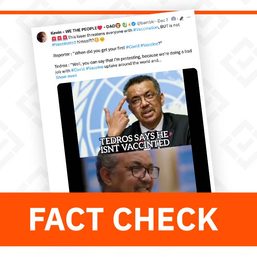
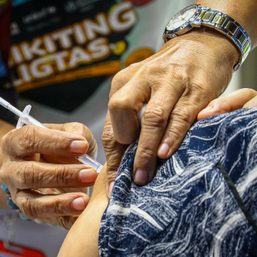
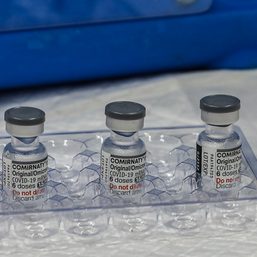

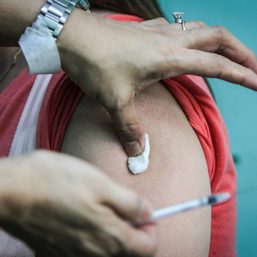
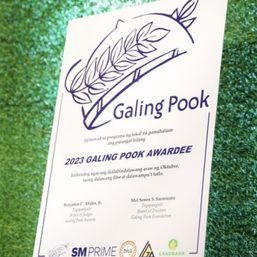
![[Newsstand] The Marcoses’ three-body problem](https://www.rappler.com/tachyon/2024/04/tl-marcoses-3-body-problem.jpg?resize=257%2C257&crop=451px%2C0px%2C1080px%2C1080px)
![[Edgewise] Preface to ‘A Fortunate Country,’ a social idealist novel](https://www.rappler.com/tachyon/2024/02/a-fortunate-country-february-8-2024.jpg?resize=257%2C257&crop_strategy=attention)
![[New School] When barangays lose their purpose](https://www.rappler.com/tachyon/2024/02/new-school-barangay.jpg?resize=257%2C257&crop=414px%2C0px%2C1080px%2C1080px)

There are no comments yet. Add your comment to start the conversation.